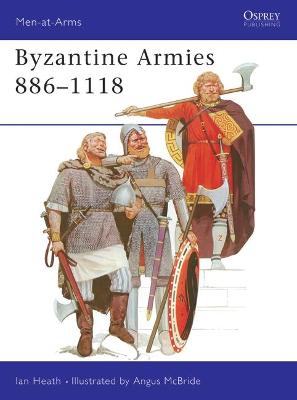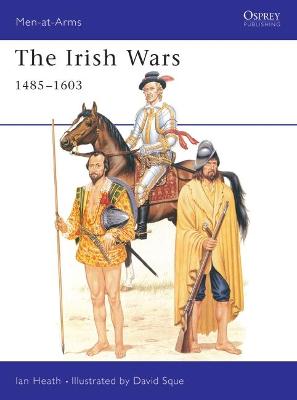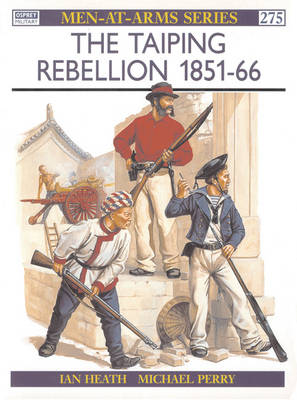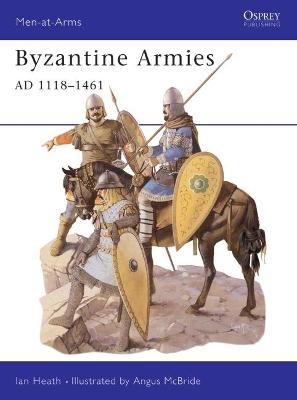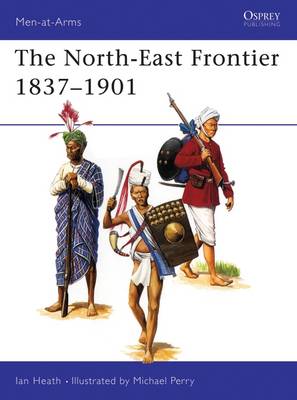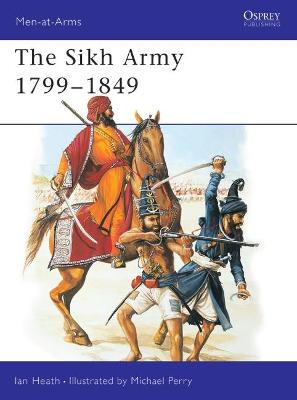Men-at-Arms
5 primary works • 6 total works
Book 89
The Byzantines had a remarkably sophisticated approach to politics and military strategy. Unlike most of their contemporaries, they learnt very early in their history that winning a battle did not necessarily win a war, and they frequently bought off their enemies with treaties and bribes rather than squander men and materiel in potentially fruitless campaigns. The Byzantine army of the 10th and early 11th centuries, at the height of its power and efficiency, was the best-organised, best-trained, best-equipped and highest-paid in the known world. This splendid book by Ian Heath examines the Byzantine Armies from 886-1118, including the lusty, hard-fighting, hard-drinking 'barbarian' Varangian guard.
Book 256
The Reformation in England further distanced the Irish, as the majority of Irishmen adhered stubbornly to their Catholicism. Eventually, in Elizabeth's reign, both sides resorted to the use of force on a large scale in a series of bloody wars and rebellions that were to culminate in the Earl of Tyrone's 'Great Rebellion' of 1595-1603. This text by Ian Heath looks at the history, organisation and tactics of the armies of the Irish Wars 1485-1603, armies which included such troops as the fearsome Irish Galloglasses, who bore a deadly axe six feet long with a blade one foot broad!
Book 275
The Taiping movement began as the Pai Shang-ti Hui (the Society of God-Worshippers), founded in Kwangsi province in 1846 by Hung Hsiu-ch'uan. A sickly individual of questionable sanity. Hung had become subject to visions which interpreted as demonstrating that he was Jesus Christ's 'Divine Younger Brother', with God's mandate to govern China. This fascinating work by Ian Heath examines the organisation, dress and weapons of forces on both sides of the Taiping Rebellion - a conflict which saw the involvement of around 10 million troops during 15 years of conflict; as many as 600 cities change hands time and time again; and 20-30 million deaths.
Book 287
The Byzantine Empire's disastrous defeat by the Seljuk Turks at Manzikert in 1071 effectively marked the end of what is often described as the 'middle' period of Byzantine history. Thereafter, surrounded on all sides by younger, more vigorous nations, the once all-powerful Empire slipped into a steady decline which, ultimately, was to prove terminal. However, the Empire's demise was anything but peaceful, and, one way or another, for much of the last four centuries of its existence it was to find itself in a state of virtually constant war. This book examines the fascinating history of the Byzantine Empire and its armies from 1118-1461 AD.
Book 324
Despite the fact that it was events on the North-West Frontier which perennially awed and captivated Victorian audiences, British India's North-East Frontier saw at least as much military activity. Even the heroid 11-day defence of the isolated outpost of Kohima against overwhelming odds - fewer than 200 British-officered troops against perhaps 6,000 Nagas - failed to capture the public imagination. Today, after the passage of another century, Britain's numerous campaigns and conquests in Assam and the surrounding hills have faded even further into the mists of obscurity. This fascinating text by Ian Heath examines the peoples and places of the North-East Frontier.
The Sikh Wars in 1845-46 and 1848-49 saw the British Army pitted against its most formidable enemy in the whole history of British India, and perhaps of the whole expansionist phase of the 19th century British Empire. The Sikh Army created by Maharaja Ranjit Singh from the 1820s was inspired by its warrior faith, but organised, drilled, uniformed, and armed in Western style. Its artillery was unrivalled in Asia, and by the 1840s the Sikhs had 50,000-70,000 regular troops and similar numbers of irregulars. Although the British were ultimately victorious, they suffered huge casualties, and the major pitched battles of the wars more closely resembled Waterioo than the actions typically fought in this theatre.
